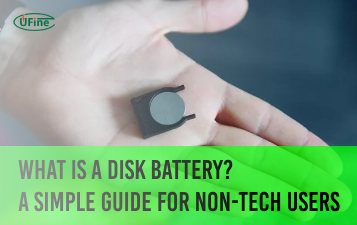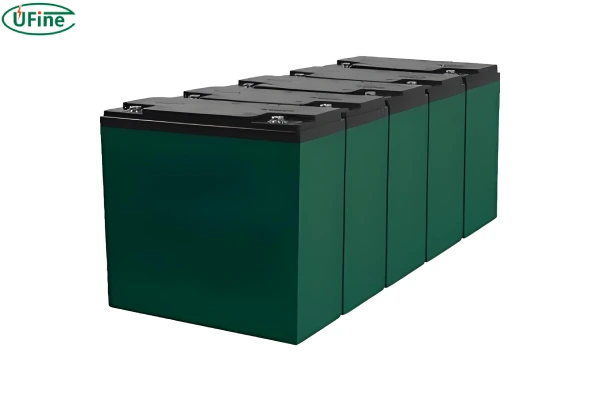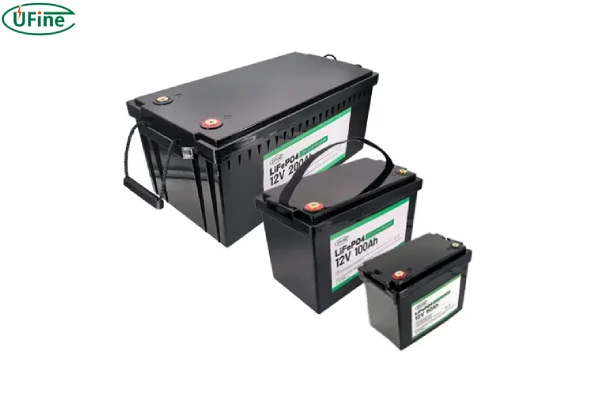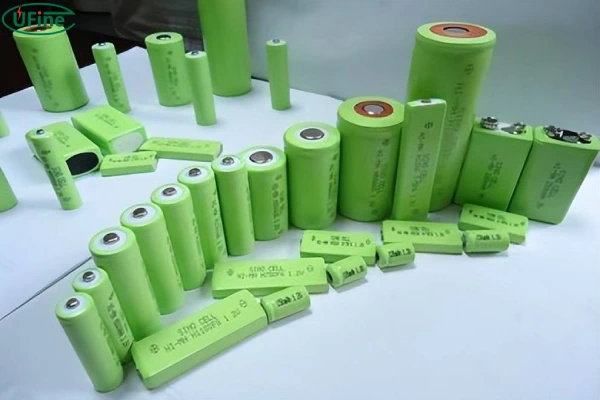Choosing the right 12V rechargeable battery can be challenging with so many options available. Whether you need it for your RV, solar setup, or other applications, understanding the different types and their features is crucial. This guide will help you navigate the various options, explaining their advantages, lifespan, pricing, and tips for making the best choice.
Part 1. 12V rechargeable battery types
1. Lead-acid batteries
Lead-acid batteries are one of the most common types of 12V rechargeable batteries. They have been used for decades and are known for their reliability.
Advantages:
- Cost-effective: Lead-acid batteries are generally cheaper than other types.
- Widely available: You can find them almost anywhere.
- Reliable: They have a proven track record for reliability.
Disadvantages:
- Heavy: These batteries are quite heavy, which can be a drawback for portable applications.
- Shorter lifespan: They tend to have a shorter lifespan compared to other types.
- Requires maintenance: Regular maintenance is needed to ensure longevity.
Applications:
- Cars: Commonly used in automotive applications.
- Backup power: Ideal for backup power systems.
- Solar systems: Frequently used in solar energy setups.
2. Lithium-Ion Batteries
Lithium-ion batteries are becoming increasingly popular due to their high energy density and long lifespan.
Advantages:
- Lightweight: Much lighter than lead-acid batteries.
- Longer lifespan: They can last significantly longer.
- No maintenance: Lithium-ion batteries require virtually no maintenance.
Disadvantages:
- More expensive: They are generally more costly.
- Requires specific chargers: You need a charger designed for lithium-ion batteries.
Applications:
- Electric vehicles: These are commonly used in electric cars and bikes.
- Portable electronics: These are found in smartphones, laptops, and other gadgets.
- Renewable energy systems: Ideal for solar and wind energy storage.
3. Nickel-Metal Hydride (NiMH) Batteries
NiMH batteries are known for being environmentally friendly and safe.
Advantages:
- Environmentally friendly: They contain fewer toxic metals compared to other types.
- Decent lifespan: They offer a reasonable lifespan.
- Safe: Generally considered to be very safe.
Disadvantages:
- Moderate energy density: Not as high as lithium-ion batteries.
- Can self-discharge: They tend to lose charge over time, even when not in use.
Applications:
- Consumer electronics: Used in remote controls, cameras, and other gadgets.
- Power tools: Suitable for various power tools.
- Hybrid vehicles: Commonly found in hybrid car batteries.
Part 2. 12V rechargeable battery pack
What is a 12V Rechargeable Battery Pack?
A 12V rechargeable battery pack consists of multiple cells combined to provide a 12-volt output. These packs are used in various applications, offering a balance between energy capacity and voltage. They are versatile and can be tailored to meet specific needs by adjusting the number and type of cells used.
How to Charge a 12V Rechargeable Battery Pack
Charging a 12V rechargeable battery pack correctly is essential to ensure its longevity and safety. Here’s a step-by-step guide:
- Check Specifications: Ensure your charger matches the battery pack’s voltage and current requirements. Using an incorrect charger can damage the battery.
- Connect Properly: Attach the charger’s positive and negative terminals to the battery pack correctly. Incorrect connections can lead to short circuits or damage.
- Monitor Charging: Keep an eye on the charging process to prevent overcharging. Overcharging can significantly reduce the battery’s lifespan and pose safety risks.
Charging Tips
- Use a charger with an automatic shut-off feature: This helps prevent overcharging.
- Avoid charging in extreme temperatures: High or low temperatures can damage the battery.
- Regularly check the battery pack for any signs of wear or damage: This can help you catch potential issues early.
Part 3. How long can a 12V rechargeable battery pack last?
Factors Affecting Cycle Life
Several factors can influence the cycle life of a 12V rechargeable battery pack:
- Usage Patterns: Frequent deep discharges can shorten the battery’s lifespan. Try to avoid letting the battery discharge completely.
- Temperature: Extreme hot or cold temperatures can degrade the battery over time. Ideally, use and store your battery at room temperature.
- Maintenance: Regular maintenance, especially for lead-acid batteries, can significantly extend their life.
- Charging Practices: Using the correct charger and avoiding overcharging can help maintain battery health.
Cycle Life of Different Types
Here’s a comparison table showing the average cycle life of different 12V rechargeable battery types:
| Battery Type | Average Cycle Life (Cycles) |
|---|---|
| Lead-Acid | 300 – 500 |
| Lithium-Ion | 1000 – 2000 |
| NiMH | 500 – 800 |
Lithium-ion batteries typically outlast lead-acid and NiMH batteries, making them a preferred choice for applications where long lifespan is crucial.
Part 4. 12V rechargeable battery pack price
The cost of 12V rechargeable battery packs varies based on the type, capacity, and brand. Here’s an overview of typical price ranges for each type:
1.Lead-Acid: $50 – $150
Affordable and widely available, but with a shorter lifespan and heavier weight.
2. Lithium-Ion: $100 – $300
More expensive but offers a longer lifespan, lighter weight, and higher efficiency.
3. NiMH: $80 – $200
Moderately priced, environmentally friendly, and safe, but with a moderate energy density.
When choosing a battery, consider not just the upfront cost but also the long-term value. Lithium-ion batteries, although more expensive initially, may offer better value over time due to their long lifespan.
Part 5. How to choose the 12V rechargeable battery?
- Determine Your Needs: Identify the specific requirements of your application. Consider factors like load demands, usage frequency, and environmental conditions.
- Compare Types: Review the advantages and disadvantages of lead-acid, lithium-ion, and NiMH batteries. Match the battery type to your specific needs.
- Check Longevity: Assess the cycle life of each battery type. A longer cycle life means fewer replacements and lower long-term costs.
- Budget: Balance your budget with the battery’s performance and lifespan. Sometimes, a higher upfront cost can save money in the long run.
- Read Reviews: Look for user reviews and expert opinions to gauge real-world performance and reliability.
- Consider Size and Weight: Ensure the battery’s size and weight are suitable for your application, especially if portability is a factor.
Choosing the right 12V rechargeable battery involves understanding your needs, comparing different types, and considering factors like lifespan and cost. By following this guide, you can decide and select the best battery for your application.
Part 6. FAQs
-
How do I know when my 12V battery needs replacing?
Signs that your battery may need replacing include reduced capacity, longer charging times, reduced performance, and any visible damage like bulging or leaks. -
Can I mix different types of 12V batteries?
No, mixing different types of batteries in the same system can lead to imbalances, reduced performance, and potential safety hazards. -
What is the best way to store a 12V rechargeable battery?
Store your battery in a cool, dry place. For long-term storage, keep the battery partially charged (around 50-60%) to maintain its health. -
Can I use a regular 12V charger for all types of batteries?
No, it’s essential to use a charger specifically designed for your battery type. Using the wrong charger can damage the battery and reduce its lifespan. -
How do I maintain a 12V lead-acid battery?
Regularly check and top up the electrolyte levels if it’s a flooded lead-acid battery. Keep the terminals clean and ensure the battery is charged regularly to prevent sulfation. -
Why does my 12V rechargeable battery lose charge quickly?
Age, usage patterns, and storage conditions can affect battery performance. If your battery is old, frequently discharged deeply, or stored in extreme temperatures, its capacity may degrade faster.
Related Tags:
More Articles

What Is a Disk Battery? A Simple Guide for Non-Tech Users
A disk battery is a small, round cell used in watches, remotes, and other electronic devices. It delivers steady power for compact, low-drain devices.
What Battery Powers a Space Heater?
Discover the type of battery that powers space heaters and learn how to choose the right one for efficient heating in your home or office.
What Is an LR14 Battery? Learn About This C-Size Cell
The LR14 battery, also known as a C battery, delivers steady power. Learn its specs, uses, lifespan, and how it compares to other battery types.
Watch Battery Dimensions Chart: Sizes, Voltages, and Equivalents Explained
Understanding watch battery dimensions helps you choose the right size, voltage, and equivalent model to keep your watch running safely and smoothly.
How Long Can You Rely on Battery-Powered Generators?
Discover battery generator runtime & lifespan factors. Learn how to maximize performance and choose the right power solution.






